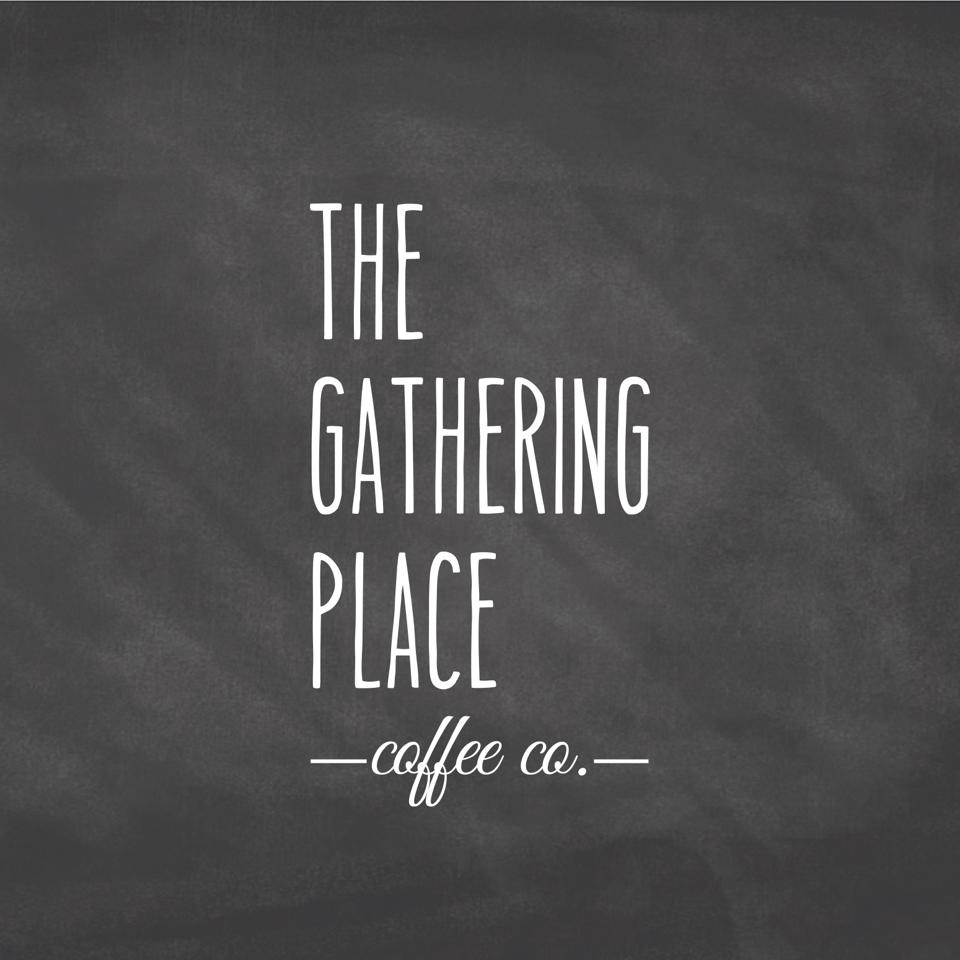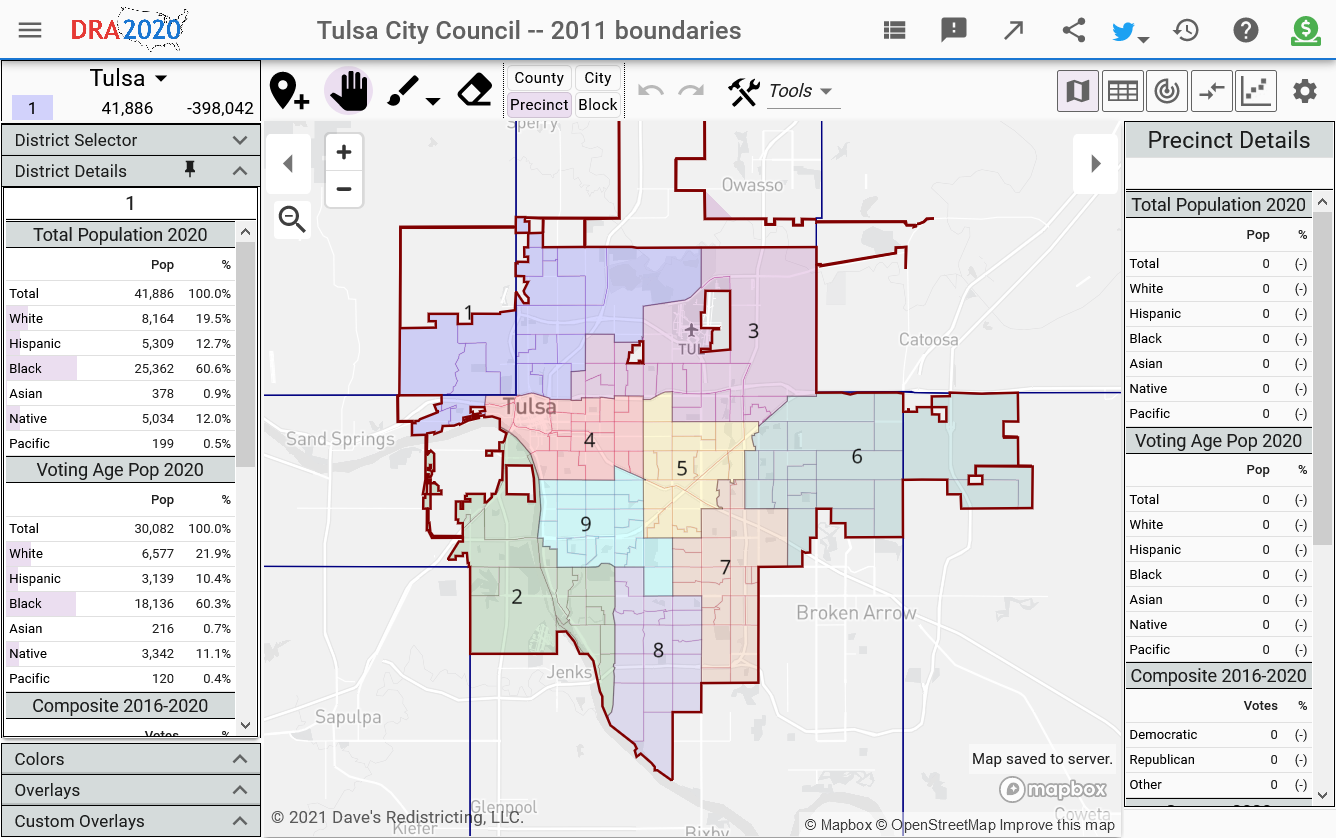September 2021 Archives
See the end of this post for an update with the lawsuit's resolution.
Tulsa's Gathering Place, LLC, has filed a lawsuit in federal court against a family-owned coffeehouse in Shawnee, Oklahoma, 90 miles away.
The trademark complaint, filed on Friday, September 24, 2021, in the Western District of Oklahoma, claims that the Gathering Place Coffee Company is guilty of trademark infringement, false designation of origin and unfair competition, trademark dilution, common law trademark infringement and unfair competition, and unjust enrichment. The Tulsa big shots demand an injunction against the Shawnee coffeehouse, payment of any profits they've earned to the Gathering Place, triple damages, "corrective advertising," punitive damages, forfeiting their social media accounts, and paying attorney's fees.
While News on 6 and Fox 23 have covered this story, they've failed to note that this lawsuit is being brought by a public entity: The complaint states that Tulsa's Gathering Place, LLC, is a wholly owned subsidiary of the River Parks Authority, which is a public trust established by and benefitting the City of Tulsa and Tulsa County, under Title 60 of Oklahoma statutes.
Here are links to the complaint as filed, the cover sheet, the summons, and a notification to the U. S. Patent and Trademark Office. The case is 5:21-cv-00940-JD, TULSA'S GATHERING PLACE, LLC, v. BAYLY COFFEE, LLC., and is accessible via the PACER federal court records system.
The complaint lists two specific trademarks, which you can look up on the U. S. Patent and Trademark Office's Trademark Electronic Search System (TESS) (the system doesn't provide permalinks):
Registration No. 5,612,344 is a standard character mark (also called a word mark), the plain text phrase "GATHERING PLACE". This was registered on November 20, 2018, a year after the Gathering Place Coffee Co. in Shawnee opened for business. The goods and services associated with the mark are listed as:
IC 041. US 100 101 107. G & S: Gardens for public admission; Providing facilities for recreational activities, namely, boating, fishing, biking and skating; Providing facilities for educational training; Providing recreation facilities; Providing recreational areas in the nature of play areas for children; Providing sports facilities; Recreational park services; Entertainment in the nature of a water park and amusement center. FIRST USE: 20180810. FIRST USE IN COMMERCE: 20180908
Registration No. 5,788,797 is a design mark, registered on June 25, 2019, 19 months after the Gathering Place Coffee Co. in Shawnee held its grand opening. It has a Mark Drawing Code of (3): "DESIGN PLUS WORDS, LETTERS, AND/OR NUMBERS." Design Search Codes, a taxonomy used to describe design elements in words, are listed as:
- 02.01.33 - Grotesque men formed by letters, numbers, punctuation or geometric shapes ; Stick figures
- 02.07.26 - Groups, grotesque (having human features or attributes)
- 04.07.03 - Geometric figures or combinations of geometric figures representing a person ; Geometric figures representing a person ; Geometric shapes forming a person ; Person formed by geometric shapes
- 26.01.02 - Circles, plain single line ; Plain single line circles
- 26.01.21 - Circles that are totally or partially shaded.
- 26.01.30 - Circles, exactly four circles ; Four circles
This trademark is registered for the following goods & services:
IC 039. US 100 105. G & S: Boathouse services. FIRST USE: 20180810. FIRST USE IN COMMERCE: 20180908IC 041. US 100 101 107. G & S: Gardens for public admission; Providing facilities for recreational activities, namely, boating, fishing, biking and skating; Providing facilities for educational training; Providing recreation facilities; Providing recreational areas in the nature of play areas for children; Providing sports facilities; Recreational park services; Entertainment in the nature of a water park and amusement center. FIRST USE: 20180810. FIRST USE IN COMMERCE: 20180908
IC 043. US 100 101. G & S: Provision of conference, exhibition and meeting facilities; Restaurant services. FIRST USE: 20180810. FIRST USE IN COMMERCE: 20180908
Note that the "first use" of these trademarks is over two years after the Gathering Place Coffee Co. in Shawnee established a Facebook page and more than eight months after the Gathering Place Coffee Co. held its grand opening. It's also interesting that the complaint omits any mention of the "FIRST USE" dates listed in the trademark filings, which would seem to show that the Gathering Place in Tulsa didn't use those trademarks until after the Gathering Place Coffee Co. was well established under that name.
The more distinctive and complex trademark involving a circle with stick figures is the only one registered in association with "conference, exhibition and meeting facilities" or "restaurant services." These goods and services are not associated with the simple word mark; only with the design mark. But the logos of the Gathering Place Coffee Company, posted on Facebook in January 2016 and still in use, bear no resemblance to the design mark registered by Tulsa's Gathering Place, LLC.
I suspect that USPTO would not have allowed the simple phrase GATHERING PLACE to be registered for "conference, exhibition and meeting facilities" or "restaurant services" because the phrase is a generic description for a place to meet and because the phrase was already registered in those classes (IC 043, US 100 101) to a Denver non-profit that provides services to the homeless, which had registered the trademark (Reg. No. 4266870) on January 1, 2013.
Jared M. Burden and Penina Michlin Chiu, both with Frederic Dorwart, Lawyers PLLC, are the attorneys listed on the complaint. The Dorwart firm is the legal arm of what Michael Mason has labeled "The Kaiser System," representing the Bank of Oklahoma and related corporate entities, Argonaut Private Equity LLC, the University of Tulsa, Kaiser-Francis Oil Company, the Tulsa Community Foundation, and the George Kaiser Family Foundation. Burden's bio says he has a bachelor's and master's in classics from Texas Tech; Michlin Chiu got her bachelor's in materials science at MIT. Michlin Chiu is listed as the attorney of record for both of the aforementioned trademarks. As an MIT alum who studied classics, I'm disappointed that people with whom I share an academic background are responsible for this lawsuit, which looks to me like a baseless act of litigious sadism rather than a genuine claim of injury. Classicists and MIT-trained engineers ought to have more dignity than to put their talents at the disposal of billionaire-backed bullies.
The Gathering Place Coffee Company held their grand opening on November 24, 2017, in downtown Shawnee, but its Facebook page was created on January 9, 2016, under that name, and the first post to that page was this "before" picture:
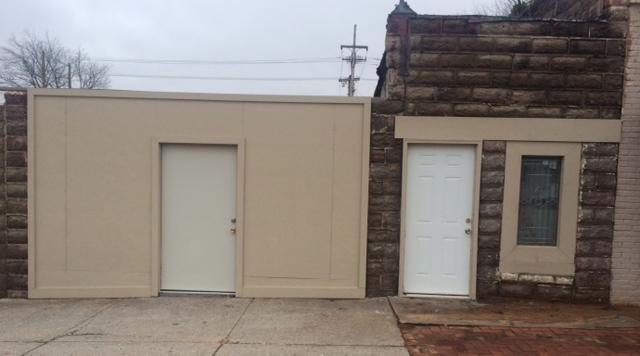
Here's a picture of the coffeehouse's facade posted on May 20, 2020:
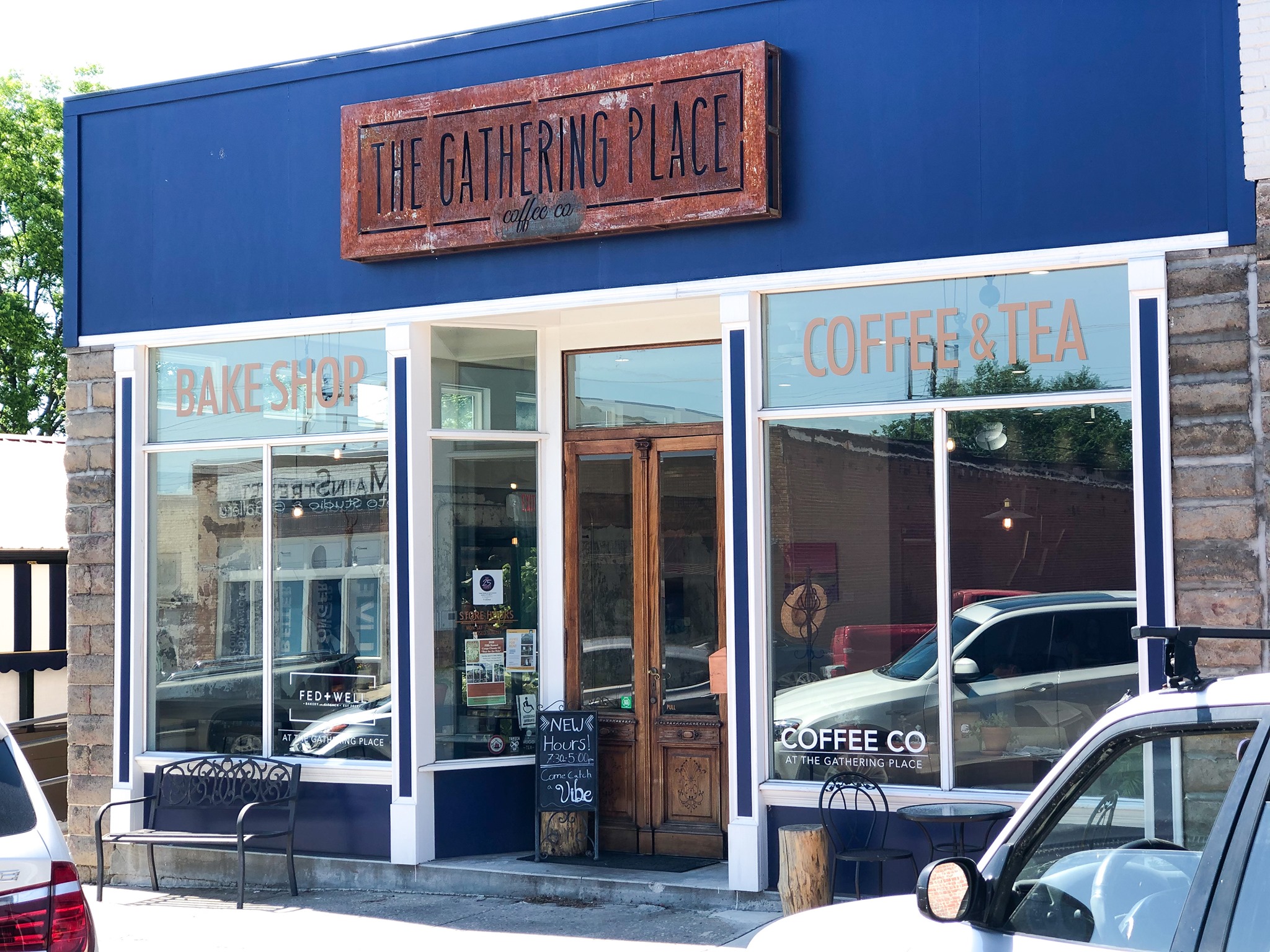
The coffeehouse has a covered back patio and a back room that has been used for yoga and other classes and can be rented out for special events.
A recent news story published by the Citizen Potawatomi Community Development Corporation describes the coffeehouse's history:
Originally owned and operated by Ogee family descendant Aaron Hembree and wife Jamie, The Gathering Place Coffee Co. opened in November 2017. It quickly became a mainstay in downtown Shawnee for its high-quality coffee, teas, baked goods and creative, laid-back atmosphere.The Ingrams moved their plant house and floral studio, Bayly Botanicals, into the adjacent store space in 2019, and the Hiltons operated Fed+Well Kitchen, baking and selling delicious desserts, pastries and more to the coffee shop's customers. As the Hembrees looked for new opportunities in 2020, the Hiltons and Ingrams decided to partner together and expand both businesses by acquiring The Gathering Place Coffee Co.; however, they needed an understanding lender to help turn their dreams into a reality....
They took over operations from the Hembrees after the CPCDC approved their loan in late 2020.
"I was just sold on them from the very beginning," [CPCDC Commercial Loan Officer Felecia] Freeman said.
"We're lucky to have this in our community. It's almost like a little incubator, being that it's got three businesses, and it helps get kids and others thinking, 'What could I do in this community?' I think that's a great atmosphere.'"
(The story above was published on September 7, 2021. I have a suspicion that a news alert on the term "gathering place" set in motion the lawsuit that was filed last Friday.)
The most recent Google Street View of the 400 block of East Main Street in Shawnee is from 2012, and it shows a distressed block of single-story commercial buildings at least a century old. I haven't been to Shawnee in quite a while, but I suspect the advent of the Gathering Place Coffee Co. has inspired revitalization in this once-unfashionable stretch of Main, several blocks from the downtown core.
Long-time BatesLine readers will no doubt recall April 2006, when Tulsa's DoubleShot Coffee Co. was threatened by Starbucks. At the time, owner Brian Franklin wrote:
I received a letter last week informing me that I am infringing on a trademark that Starbucks has had since 2001, "Starbuck's Doubleshot." The lawyers advised me to cease using the DoubleShot Coffee Company name, to shut down my website (http://www.DoubleShotCoffee.com), and to destroy everything I have which bears the "DoubleShot" name. Come read the letter yourself-- it's framed and hanging on the wall, over the garbage can.At first I frowned, then I smiled, then I laughed, then I experienced a little anger and fear, and then I went back to vengeance and irritable laughter. As you know, I don't take kindly to people telling me what to do. After briefly discussing the matter with my lawyer, and a gaggle of other lawyers who regularly patronize DoubleShot (my DoubleShot, not the can at the gas station), I don't think Starbucks has a leg to stand on. Doubleshot is a generic industry term for two shots of espresso. They have no exclusive rights to it. But they will try to scare me and lawyer me out of business if we give them the opportunity.
DoubleShot Coffee Co. did not give them the opportunity. News of the threat gained international attention (e.g. articles in Consumerist, AnandTech, Age of Reason), and six months later, Starbucks' lawyer wrote to withdraw the threat.
The Age of Reason blog listed several other threats by Starbucks against small businesses, such as a coffeehouse named Sam Buck's (owned by someone named Sam Buck) and a brewer who made a beer called Star Bock, pointing out that even though most of the small businesses prevailed over the corporate giant's specious claims, "that did not stop them from incurring legal fees that nearly bankrupted them. A small privately owned company with half a dozen employees does not have the money that a company like Starbucks has at its disposal for legal and court costs. Sometimes just the threat of a lawsuit can wield results."
Brian Franklin's successful strategy: Publicize the threat far and wide (starting with local media) and inflict shame and embarrassment on the aggressor. The story even inspired a filmmaker to spotlight DoubleShot in a full-length documentary: The Perfect Cappuccino. DoubleShot continues to grow and thrive, now in a much larger location on Boulder Avenue.
Shawnee, a small city of about 30,000 souls, has a couple of other independent coffeehouses, but if Tulsa's Gathering Place, LLC, pushes forward with their suit, with the power and wealth of the Kaiser Machine behind them, Shawnee residents will lose an important gathering place. Tulsa has lots of gathering places, many great coffeehouses, and our belligerent leaders seem determined to deprive a little city of one of the few they enjoy. I'm reminded of the prophet Nathan's speech to King David. Because this suit has been launched by a public entity, the governing officials -- Mayor of Tulsa, the City Council, the Tulsa County Commission -- will all have the death of this little coffeehouse on their hands, as will the man whose money sustains Tulsa's Gathering Place. If they are capable of feeling shame, they should demand withdrawal of the lawsuit and make apologies to the Hiltons and the Ingrams and the City of Shawnee.
UPDATE: On October 5, 2021, Tulsa's Gathering Place, LLC, Gathering-Place-Coffee-Lawsuit-Dismissal.pdffiled a voluntary dismissal of the case. There's a funny, telling error in the dismissal: Attorney Jared Burden subtitles himself, "Counsel for Defendant BOKF, NA." I guess he forgot which arm of the Kaiser System he was representing. A "joint statement" was issued to the media the same day:
In an effort to both protect trademark rights and to defray costs of litigation, Bayly Coffee, LLC and Tulsa's Gathering Place, LLC announce they have reached a mutually acceptable agreement pursuant to which Bayly will license the use of the GATHERING PLACE trademarks from Tulsa's Gathering Place.
I'm happy that the Gathering Place Coffee Company will be able to continue to trade under the name by which the people of Shawnee have come to know and love them. I'm very happy that the Kaiser System bullies have been forced by public outcry to back down. They damaged the reputation of Tulsa's Gathering Place far more than the remote possibility of confusion with a pretty, popular coffee house 90 miles away. Maybe they will learn that the rest of Tulsa -- the Tulsa that exists outside of City Hall, the Education Service Center, and the non-profits -- is full of people of character, people who don't kowtow to the wealthy, people who don't respect bullies.
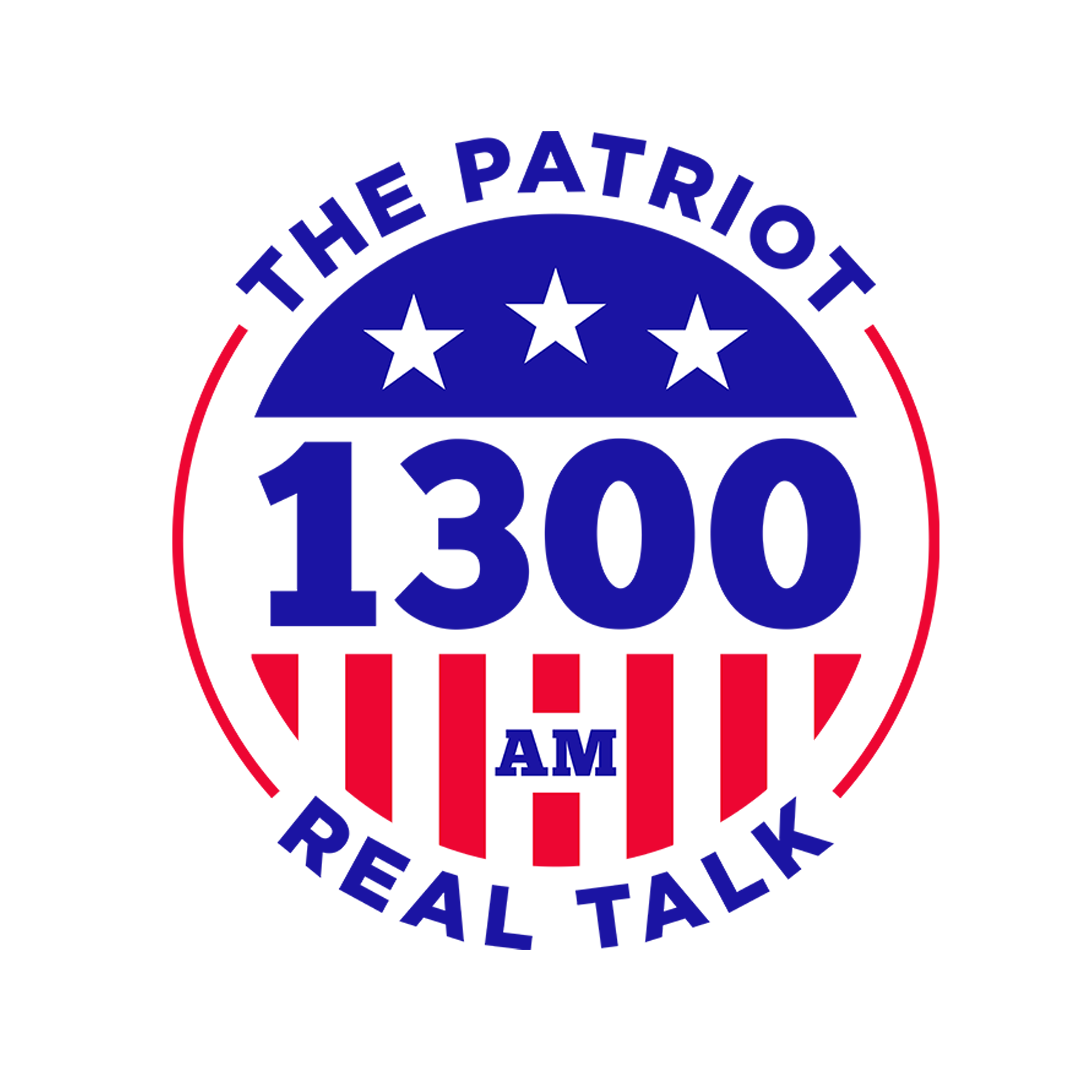 Local (almost), live conservative talk radio has returned to the Tulsa airwaves, on the frequency that was the first full-time talk radio station in Tulsa over 40 years ago. AM 1300 KAKC, owned by iHeartMedia, has rebranded itself as 1300 The Patriot, as of September 15, 2021.
Local (almost), live conservative talk radio has returned to the Tulsa airwaves, on the frequency that was the first full-time talk radio station in Tulsa over 40 years ago. AM 1300 KAKC, owned by iHeartMedia, has rebranded itself as 1300 The Patriot, as of September 15, 2021.
The station's line-up features live national talkers for most of the day. Glenn Beck is on live from 8 a.m. to 11 a.m. after a long absence from Tulsa. Clay Travis and Buck Sexton, the Excellence in Broadcasting (EIB) Network's choice to fill Rush Limbaugh's shoes, are live from 11 a.m. to 2 p.m. Charlie Kirk, founder of Turning Point USA, is on from 2 p.m. to 5 p.m. Two competing afternoon drive shows are offered on delay: Jesse Kelly from 7 p.m. to 10 p.m., followed by two hours of the Joe Pags Show from 10 p.m. to midnight. The eerie Coast to Coast AM with George Noory is on from midnight to 4 a.m., followed by This Morning: America's First News with Gordon Deal, an hour-long show repeated four times, from 4 a.m. to 8 a.m. (Looks like a couple of those repeats could easily make room for a local morning show.)
From 5 p.m. to 7 p.m., Lee Matthews, program director at KTOK 1000 in Oklahoma City, hosts "The Drive," a call-in show that is simulcast on KTOK. (Matthews also does a two-hour 6 a.m. to 8 a.m. morning drive slot on KTOK.) I called into Lee's show Thursday evening to call attention to my post on Tulsa City Council redistricting and was surprised to get right on the air. Lee was very gracious, and I hope to talk to him again soon.
News breaks feature the familiar voice of Brian Gann, former program director and news director at KVOO/KFAQ. Gann moved to iHeartMedia in 2014 and is now South Central Region News Director, covering Texas, Oklahoma, Arkansas, and Louisiana.
RadioInsight reported on September 15:
KAKC was one of two "Buzz" branded Sports station in the iHeartMedia Tulsa cluster running CBS Sports Radio programming around the clock, while 1430 KTBZ carried Fox Sports Radio programming. With Fox moving to Griffin's new "The Blitz 1170" KTSB, KTBZ is now simulcasting local programming from iHeart's recently launched "94.7 The Ref" KREF-FM Oklahoma City from 6am to 6pm and CBS Sports Radio at night.
It was a smart move by iHeartMedia, a response to Griffin Communications' decision to convert 1170 KFAQ from news/talk to sports talk, now rebranded as KTSB, The Blitz 1170, a result set into motion by KFAQ morning host Pat Campbell's medical challenges last year.
On January 12, 2020, Campbell had a car accident caused by a seizure that had been triggered by brain tumors. Although he returned to the air on January 22, he went on to endure radiation and chemotherapy and had additional seizures and additional absences. A seizure in October 2020 required him to be intubated, which left him "sounding like Carol Channing," requiring vocal therapy before he could return, which he did on Election Day, November 3, 2020.
But Pat's show on December 4, 2020, turned out to be his last. Casey Bartholomew, until recently a full-time radio freelancer -- in August, Casey was named program director for two Cumulus stations in Columbia, Missouri -- became Pat's permanent fill-in, broadcasting from his home studio in another state; KFAQ program director Jeremie Poplin had already taken over the 10:00 a.m. to noon slot. We heard that Pat's return was going to happen after the new year, then in late January, and then no planned date at all.
In early May 2021, Griffin Communications announced that Pat would not be returning and that there would be a nationwide search for his replacement. Pat continues to be active on Facebook and Twitter, reporting continued improvement, but he has not yet resumed his broadcasting career.
In late July 2021, Griffin announced that they were scrapping news/talk for sports talk for mid-August; the launch date was later delayed until September 6.
Poplin had been a sports talk host at KTBZ The Buzz, spending 18 years at the station before being caught in a massive iHeartMedia layoff in January 2020; he landed at Griffin Communications as the new KFAQ program director a few weeks later, replacing Shelby Travis. Poplin never seemed comfortable dealing with controversial political controversy, and it's understandable that he would steer the station back in a familiar direction. For Griffin, however, it seems like a strange move, given declining viewership for sports in recent years.
According to FCC records, the station debuted at 1310 kilocycles on January 9, 1939, as KOME, licensed to Harry Schwartz and Oil Capital Sales Corporation, with a transmitter at 3904 S. Newport Ave. in Brookside and studios in the American Airlines Building at 910 S. Boston downtown. The station moved to 1340 with the 1941 NARBA frequency reallocation, then in 1947 to 1300 with a higher powered transmitter (5 kw daytime, 1 kw nighttime) at 86th and Harvard. The call letters stood for Oklahoma's Magic Empire.
For many years, KOME's studios were on the second floor of 724 S. Main St., in the building that was home for many years to Harrington's. It was there in 1957 that KOME disk jockey Rocky Curtiss (later known as Rocky Frisco) began his 600-mile ride on a three-speed bike to see Elvis at boot camp in Fort Hood, Texas, a publicity stunt to try to supplant rock-and-roll radio rival KAKC, then at AM 970. In 2009, Jim Hartz, retired host of NBC's Today Show and PBS programming, and Mike Ransom, webmaster of Tulsa TV Memories, did some urban exploration and took photos in the old studios, where Hartz had begun his broadcasting career in 1958. The studios had been abandoned for 40 years at that point. The building has since been renovated as loft apartments.
In 1973, the station (along with KMOD) was purchased by San Antonio Broadcasting (which became Clear Channel in 1979 and is now iHeartMedia) and renamed from KCNW to KXXO. In the late 1970s, KXXO became the first full-time news/talk radio station in Tulsa, featuring network programming from CBS Radio (CBS Evening News with Douglas Edwards, CBS Mystery Theater) and the Mutual Broadcasting System (Larry King Show) and local programming including Hal O'Halloran's Sports Night, play-by-play for local teams, daytime news and talk hosts like Kitty Roberts and Glenda Silvey, and commentary from local activist Vince Sposato. KXXO and KMOD shared studios in the City Bank building at 5350 East 31st Street.
The news/talk experiment didn't last long. KXXO changed call letters and format in October 1980, becoming KMOD-AM, then KBBJ (big band & jazz) in April 1982, and ultimately KAKC in January 1987, picking up the call letters that once graced AM 970 as a pioneering rock-and-roll station. 1300 has had a variety of formats since that time, including oldies, a mixture of sports and news/talk (featuring syndicated shows like G. Gordon Liddy in the 1990s and a local morning drive show with "Commander" Ken Rank), Spanish language ("La Bonita"), and sports talk.
It's great to have talk radio back on AM 1300, and I hope that the station soon finds room in its schedule for truly local Tulsa talk.
Tomorrow, September 24, 2021, the City of Tulsa Election District Commission will hold a special meetingto consider a set of five proposed plans for redrawing Tulsa's city council district boundaries for possible presentation for public comment. The proposed plans were assembled by mapping staff at the Indian Nations Council of Governments (INCOG), which is a contractor to the City of Tulsa for planning services. The key agenda item: "Presentation and possible selection of alternative Council District Plans for public review and comment."
A series of four meetings for public comment on the proposals are planned for mid-October:
- Tuesday, October 12, 2021, 7:00 p.m. Martin Regional Library, 2601 S. Garnett Rd.
- Wednesday, October 13, 2021, 7:00 p.m. Hardesty Regional Library, 5131 East 91st
- Thursday, October 14, 2021, 7:00 p.m. Zarrow Regional (West) Library, 2224 West 51st
- Monday, October 18, 2021, 7:00 p.m. Rudisill Regional Library, 1520 N. Hartford
The proposed timeline for the Election District Commission calls for the commission to review input from the public meetings on October 22, select a preferred plan on November 5, hold a public hearing on the plan on November 19, then vote to approve the selected plan on December 10. The new plan will govern the 2022 Tulsa City Council elections.
Tulsa's city charter requires redrawing district boundaries following each decennial U. S. Census to take into account shifts in population. By charter, the city uses existing precinct boundaries as the atomic building block for districts, rather than going down to the block level as congressional and legislative redistricting must do.
Tulsa's 2020 population is 413,120, making the ideal district size 45,902. The five proposals deviate from the ideal between 3.0% and 4.3%. Currently, Districts 2, 3, 6, and 7 are overpopulated, 8 is slightly below the ideal, and Districts 1, 4, 5, and 9 need to add significant population. District 6 (53,536) has had the most growth in the last 10 years, thanks to new housing developments in the Broken Arrow school district (south of 31st and east of 145th East Ave). District 2 (51,363) has most of the territory that lies within the Jenks school district and has seen significant growth around Tulsa Hills. (One gets the impression that liberating the rest of the city from Tulsa Public Schools would encourage growth in those areas as well.)
The PDF of the proposed plans from INCOG includes statistics on the demographics of each district for each plan. Although African Americans now constitute 15% of Tulsa's population, the city is so racially integrated that it is difficult to draw a district that contains a majority of African Americans. Only INCOG plans 1 and 5 succeed in that, and only barely with African Americans comprising slightly over 50% of the population in District 1 in those two plans. (If we had 15 city councilors, more facets of Tulsa's population could be represented on the City Council.)
After approval of a charter change pushed by Mayor G. T. Bynum IV, the Election District Commission is now a five-member board, all appointed by the mayor. The board members are former City Councilors John Eagleton, Susan Neal, Rick Westcott, and Joe Williams, and the ubiquitous Sharon King Davis. ("Should we go out into the community, meet new people, and appoint someone without political and social connections, who's never served on a commission before? Nah, let's just appoint Sharon again.")
The 2011 commission was used by then-Mayor Dewey Bartlett Jr. and his allies as an instrument of political revenge against his critics. Eagleton was drawn out of his district; his District 7 precinct was attached to District 9, where Bynum IV was the incumbent. Westcott faced some disadvantageous precinct shifts, losing heavily Republican precincts on the east side of the river, but after he announced his intention not to seek reelection, the proposed boundary changes were reversed. Major population shifts between districts helped well-financed challengers unseat incumbents in Districts 3, 4, and 5, as the incumbents had to build support where they had no previous relationships with constituents and neighborhood associations, where the media narrative of bickering councilors was unchallenged by direct personal experience. In a nutshell, the mayor and his allies successfully used redistricting to wipe out any check or balance from independent-minded councilors.
Ten years later, we don't have any dissidents on the City Council at all, and elections are now officially non-partisan (but not really), so the motives shaping the process will be different this time. Three of the members have found themselves on the wrong side of the city establishment, and two of them were directly targeted by the last redistricting effort, which offers some hope for integrity in the final product. I suspect there will be an effort to protect District 8 councilor Phil Lakin, an important cog in the Kaiser System as CEO of Tulsa Community Foundation and Bynum IV's heir apparent in 2024, but I don't see any evidence of a serious challenge to his 2022 re-election.
Given that the 2011 map was a gerrymander that involved moving a large number of people between districts to punish certain councilors, it would be appropriate to reverse some of those changes. For example, Maple Ridge should be moved back into 9, and the area east of Yale that shifted to 9 ("Bartlett's Revenge") should go back into 7. It would be interesting to start with the 2001 plan and create a plan that equalized population with a minimum of precinct changes.
For the sake of inclusion and equity, it would be good to pack as many half-million dollar homes into one district as possible (two districts at the most). The wealthy have dominated and will always dominate the mayor's office because of the resources required to run a city-wide campaign; for balance, the council should maximize representation of Tulsans from the working class, middle class, and small business owners. Pursuant to that, District 9 should not expand further northeast; it would make sense instead to add precincts like 115, 123, and 124 to 9.
Many jurisdictions are using a free website, Dave's Redistricting App, to allow citizens to experiment with potential maps and submit them to redistricting commissions for consideration. (The screenshot at the top of this entry shows Dave's Redistricting App with the current Tulsa district map.) Tulsa is not officially supporting such an effort, but I have created maps showing the current (2011) and previous (2001) district maps, as well as the five INCOG proposals:
- City of Tulsa: current council district boundaries
- City of Tulsa: approximate district boundaries from 2001, before the Bartlett gerrymander of 2011. The boundaries on the 2001 map are only approximate, using current precinct boundaries, because of consolidation of precincts over the last decade.
- City of Tulsa: INCOG Plan I
- City of Tulsa: INCOG Plan II
- City of Tulsa: INCOG Plan III
- City of Tulsa: INCOG Plan IV
- City of Tulsa: INCOG Plan V
- City of Tulsa: INCOG Plan VI (added 2021/09/24)
I encourage you to sign up for a free account, duplicate the maps I've linked, make your own edits, and then publish and share your proposals.
MORE: My 1991 Tulsa Tribune op-ed in reaction to the Democrats' legislative gerrymander, setting out some principles that should govern redistricting, including the most important, communities of interest: "Ideally, districts should be centered around regions, cities, neighborhoods, and other natural affiliations. You should be able to give a simple geographic name to each district: northern Broken Arrow, Brookside, metro Oklahoma City."
UPDATE 2021/09/28: At the September 24, 2021, meeting of the Election District Commission, an additional map was introduced. Here is the current package of six maps. This is similar to Plan V, but it moves precinct 111 from District 2 to 9, precinct 123 from 9 to 8, and precinct 171 from 8 to 2. The change reduces the number of precincts moved from one district to another by 1, but increases the population deviation from 3.0% to 3.3%. I've added the map to Dave's Redistricting App and to the list above.

